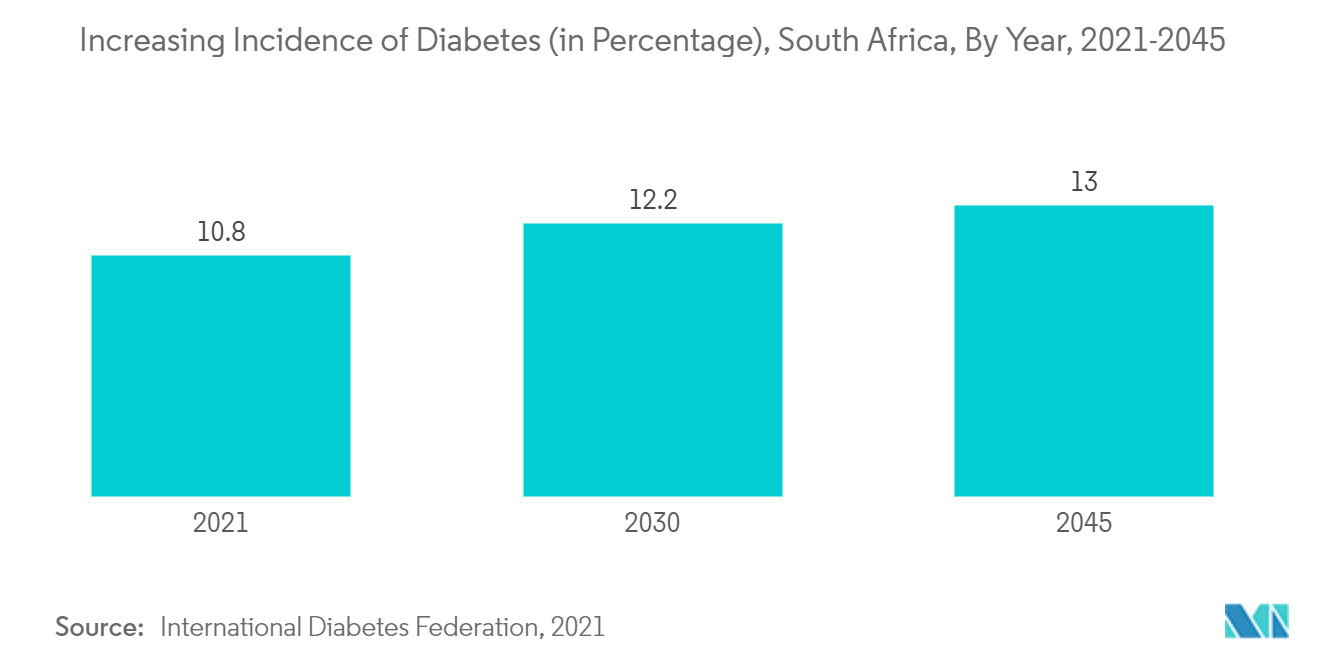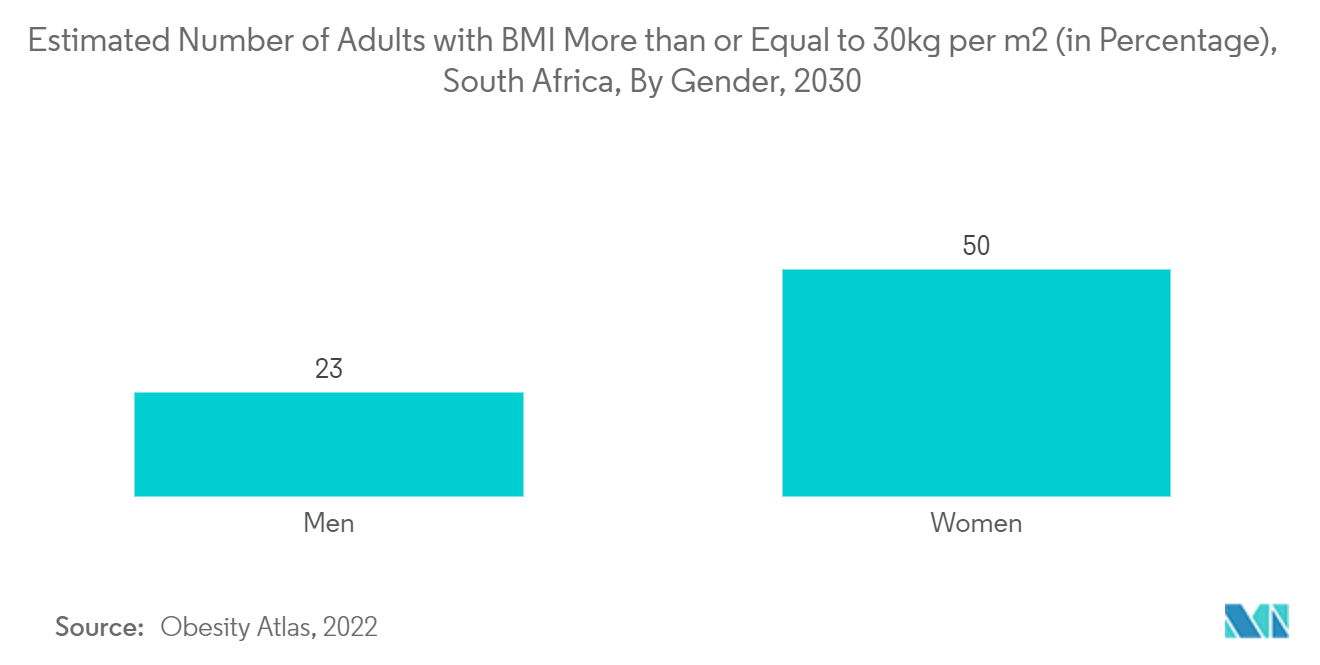Market Trends of South Africa Wound Care Management Industry
Bandages are Expected Witness Significant Growth Over the Forecast Period.
The bandage segment is expected to witness significant growth over the forecast period owing to the rising incidence of chronic wounds, the rising number of accidents and surgical operations, and the rise in the geriatric population.
The increasing incidence of road accidents and injuries is one of the main reasons to promote the adoption of bandages which will boost the segment growth. For instance, Transport Safety Report, published in November 2021, stated that in South Africa, despite tremendous governmental efforts to curb the soaring trajectory of road crashes, the annual number of road fatalities has increased by 26% in the year 2021, reaching 12,545 road fatalities.
Similarly, the increasing number of diabetic cases may lead to an increased risk for diabetic ulcer cases is also contributing to the growth of the segment. For instance, in 2021, IDF reported 10.8% of the population of South Africa was reported with diabetes in the year 2021 and this number is expected to increase to 13% by 2045. Thus increasing diabetes cases may lead to an increased risk of diabetes ulcers, which may increase the demand for bandages, for overcoming diabetic ulcer cases and driving the growth of the segment.
The increasing cases of different traumatic wounds and burns are one of the major factors driving the adoption of bandages. For instance, an article published in the journal JSR, in October 2021, stated that in South Africa total number of burn patients recorded was 44,369 in the year 2020, of which the mean proportion of males was 56%. The most common cause of injury was scalding 61%, followed by open flame 17%. Thus, the increasing number of cases of burns recorded in the country is increasing the demand for active wound care products to treat, a variety of chronic and acute wounds in-home care settings, and hospitals, and clinics are expected to drive the demand for a bandage, thereby propelling the growth of the segment.
Thus, the rising incidence of chronic wounds, the rising number of accidents and surgical operations, and the rising incidence of the geriatric population are leading to drive the growth of this segment over the forecast period.

Surgical Wounds are Expected Witness Significant Growth Over the Forecast Period.
The surgical wound segment is expected to witness the growth of South Africa's wound care management market owing to the increasing volume of surgical procedures, increasing obesity volume among the citizens, and growing demand for faster recovery of wounds.
The increasing cases of obesity are leading to an increase in bariatric surgery that is driving the demand for wound care, thereby driving the growth of this segment. For instance, the Obesity Atlas 2022, reported that 50% of South African women and 23% of men are expected to have a BMI of more than or equal to 30kg/m2 by the end of 2030. The increasing BMI is a primary indicator of increasing obesity, which may increase the demand for bariatric surgery. Thus, the high number of bariatric surgeries may increase the demand for surgical wounds, contributing to the growth of the segment.
Similarly, another article published in the journal IJERPH, in September 2022, reported that South Africa has one of the highest prevalences of obesity, with a projected increase in obesity of 47.7% in females and 23.3% in males by 2025. Thus, high incidences of obesity are leading to increasing demand for bariatric surgery, thereby driving the demand for surgical wounds and driving the growth of the studied market.
Furthermore, the article published in the journal Global Health Action, in June 2022, reported that South Africa, in particular, has a high burden of surgical conditions such as traumatic injuries, cancer, and other complications of non-communicable and communicable diseases, which is driving the demand for surgical wounds and contributing to the growth of the segment.
Thus, the increase in obesity and the high burden of other chronic diseases leading to the surgeries are driving the demand for this segment and contributing to the segment's growth.


